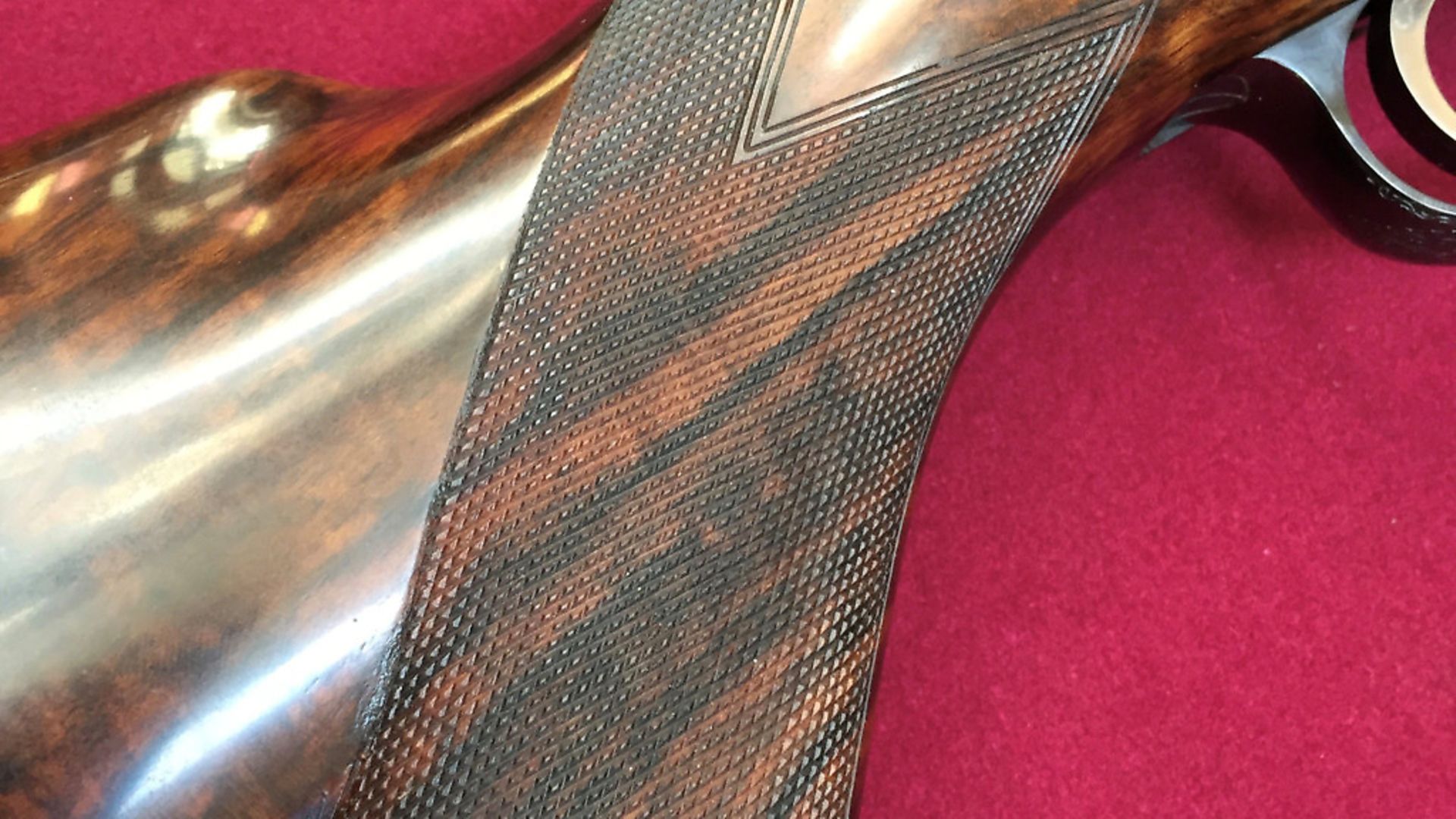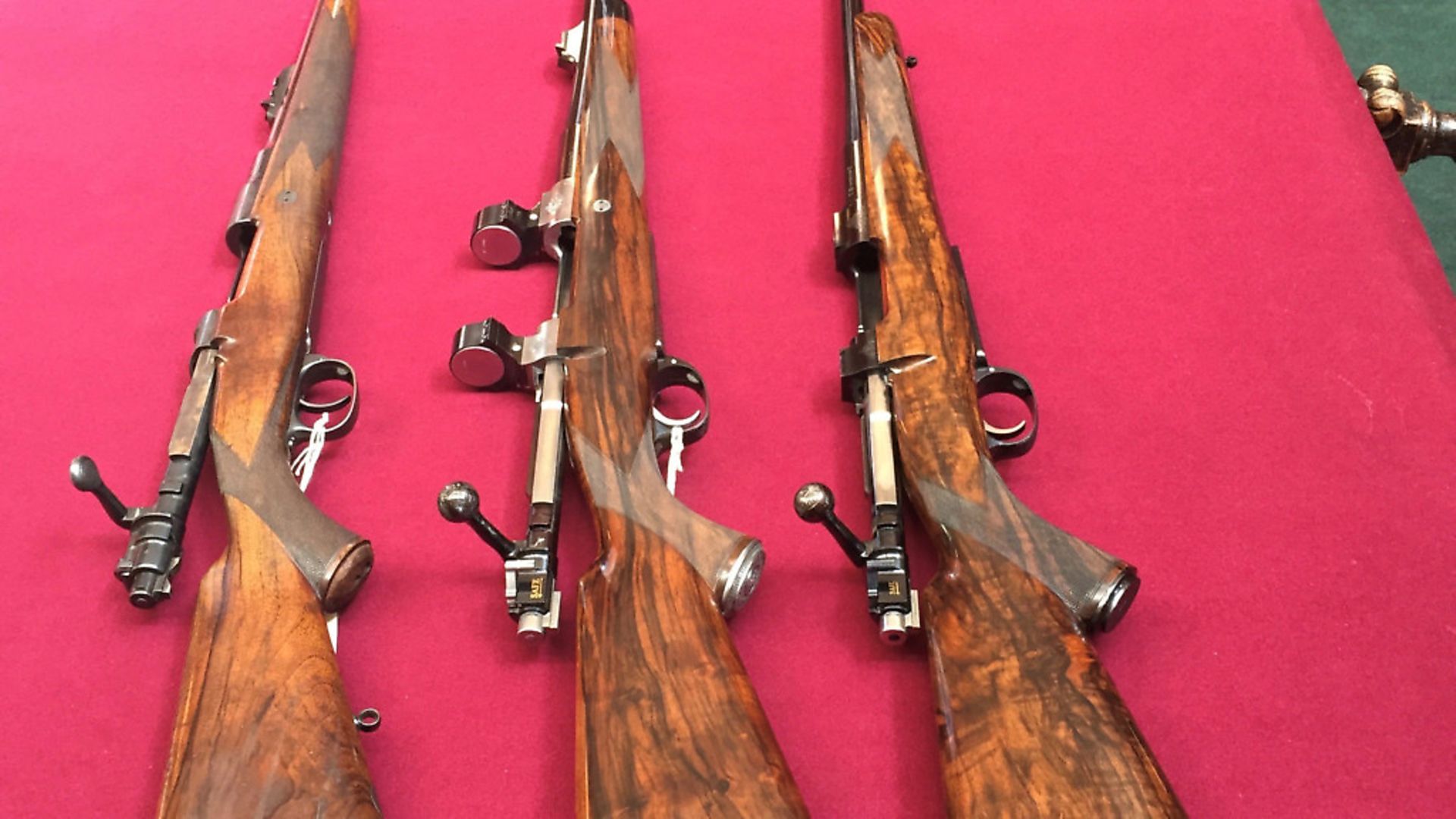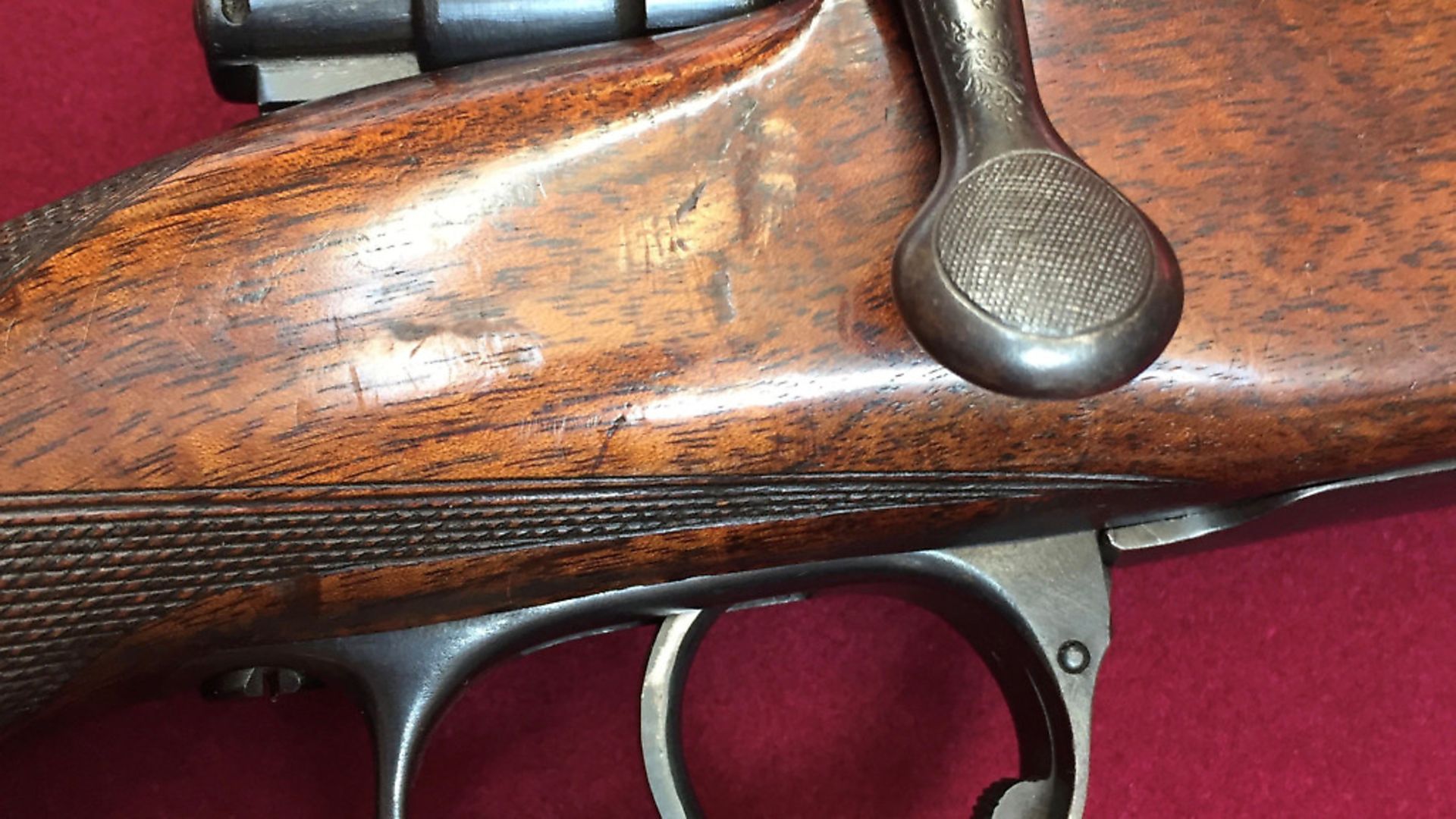Purdey have been selling bolt-action rifles since the late 1800s. Today, they have fine-tuned the platform to compete in a demanding market, writes Diggory Hadoke
 credit: Archant
credit: Archant
If you examine a 1930s Purdey bolt-action rifle, you will see a Mauser action, based on the classic Mauser 98, with its controlled-feed and inherent resilience.
In the years between the two world wars, many English gunmakers retailed bolt-action sporting rifles and the favoured styles were manufactured by either Mauser or Mannlicher.
The Mannlicher-Schönauer, with its lovely rotary magazine and smooth bolt, was available as a take-down or a Stutzen style, while the Mauser was the precursor of what would quickly take shape as the traditional London pattern stalking rifle.
 credit: Archant
credit: Archant
Purdey, like other gunmakers in England, sold other types of sporting rifle for medium game. The Henry falling-block, for example, was elegant and beautifully made: the choice of the wealthy and tasteful. The popularity of rook rifles in the 1880s was one that Purdey also benefitted from, selling them ready made from specialist manufacturers in Birmingham.
However, all the other styles of rifle fell away from the catalogue as Purdey streamlined their sales. At one time, they even sold Winchester repeating rifles and Tranter revolvers. As many models were withdrawn, bolt-action stalking rifles remained firm favourites with many customers, fulfilling, as they did, the need for an affordable, reliable and handy all-purpose weapon.
Eventually, the Mauser-type rifle became the favoured style and Purdey has sold them steadily right up to the present day. As of 2017, a new Mauser-action bolt-rifle, custom-built at Purdey’s factory in Hammersmith cost £70,000 plus VAT.
 credit: Archant
credit: Archant
At a time when mass-produced bolt-action rifles were actually very good and a mere fraction of that cost, it became apparent to the management at Purdey that the time had come to address the need for a very accurate rifle that would perform to modern standards yet retain the essential qualities of a Purdey.
The traditional Mauser stalking rifle that Purdey have been building is hand-bedded into the walnut stock and the barrel is fixed. The tendency for wood in the stocks of stalking rifles to expand, contract or move due to moisture and atmospheric conditions has long been an issue for rifle builders, as it affects accuracy. The skilled work that goes into handfitting every action into the stock is also very costly. Both issues had to be addressed in order to bring the classic stalking rifle into the 21st century.
Purdey decided that they should start with practical necessities. The rifle had to shoot accurately and achieve a group under 1” at 100 yards, or better. That was a challenge to a traditional rifle builder, but something modern, highly technical, rifles deliver and that modern hunters demand. What those modern rifles tend to have in common is an action that fits into a metal chassis embedded in the stock, and a free-floating barrel.
One notable result of Purdey’s development is their chassis system – embedded in a walnut stock, crafted by the latest CNC machining process to exceptionally high tolerances. The chassis is made of titanium as it’s lighter than steel and stronger than aluminium. Not only seating the action, it also supports the fore-stock, enabling the barrel to be free-floated without fear of the wood moving.
The action itself is not a recycled contract Mauser of the 20th century, as so many custom rifles tend to be. Stocks of the old actions are drying up, the customs restrictions in the USA make recycled military actions legally difficult for import and there is something unsatisfactory in a modern gunmaker building a new rifle on a second-hand action. So, Purdey are sourcing their Mauser actions in the UK, where they are made from a single piece of steel and incorporate a three-position safety modification, which is not only safer but it works better with a riflescope.
Purdey are now so confident that they guarantee every rifle will shoot sub-MOA with the ammunition they provide. Each rifle is regulated at the range before dispatch and is delivered with a target showing the last group shot by the tester.
Your new Purdey bolt-rifle will not come with iron sights, but it features swing-off mounts on the double square bridge and it is threaded for a moderator, if you choose to fit one. The thread is neatly covered by a screw-on shroud, which fits flush and is almost invisible, when not in use.
Customisation is virtually limitless, but in stock form this looks every inch the London Best bolt-rifle. Walnut is a high grade, stock proportions, chequer, grip cap and overall fit and finish are what you would expect from Purdey. Sling mounts have been moved onto the stock, keeping the barrel free. The choice of chamberings is almost limitless. Purdey have 200 reamers in stock, to cover all tastes.
Standard fine rose and scroll engraving adorns the metal parts and I see very little point in further embellishment, although experience tells me that gold lettering and crests or initials are likely to be requested by a fair number of customers. As the rifles are built entirely in house, the bespoke nature of every order is entirely at the whim of the customer.
With a base price of £25,000, plus VAT, you still have a long way to go before your custom options overtake the basic price of the traditionally made model it replaces. The Purdey sits squarely in the market sector currently occupied by Rigby’s London Best, which, in base form, is a couple of grand cheaper, though in reality about the same once you have added a small refinement or two. This leaves the sub-£10,000 market to the Rigby Highland Stalker and Big Game bolt-actions. Purdey do not feel that is a sector that fits their client demographic.
A prototype of the new model was tested to some acclaim in the press recently and the first production model, a 7mm Rem Mag was available to me to examine this month. Viewing a 1937 Purdey Mauser alongside a 2017 traditional London Best and a new Classic model was interesting. The development of the rifle’s characteristics is evident. The modern version fills the same place in the battery of the 21st century hunter as the earlier version did for his grandfather, between the wars.
The new Purdey rifle is a triumph of modern engineering teamed with traditional gunmaking and equally exacting demands for accuracy, reliability and quality. So, if you have decided to order a new model this year, instead of the traditional one, what are you going to do with that spare fifty grand?